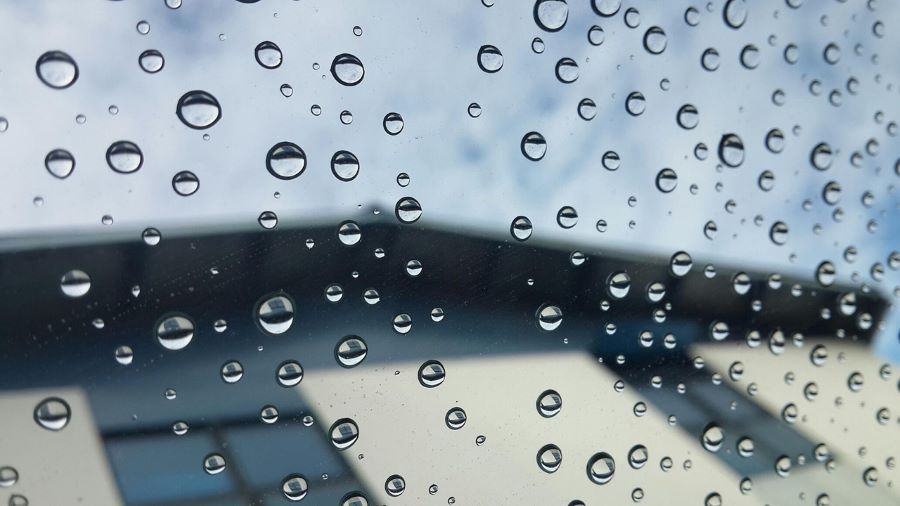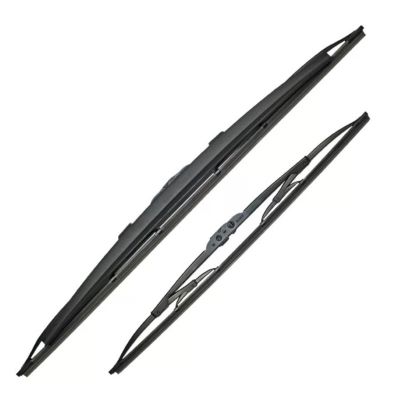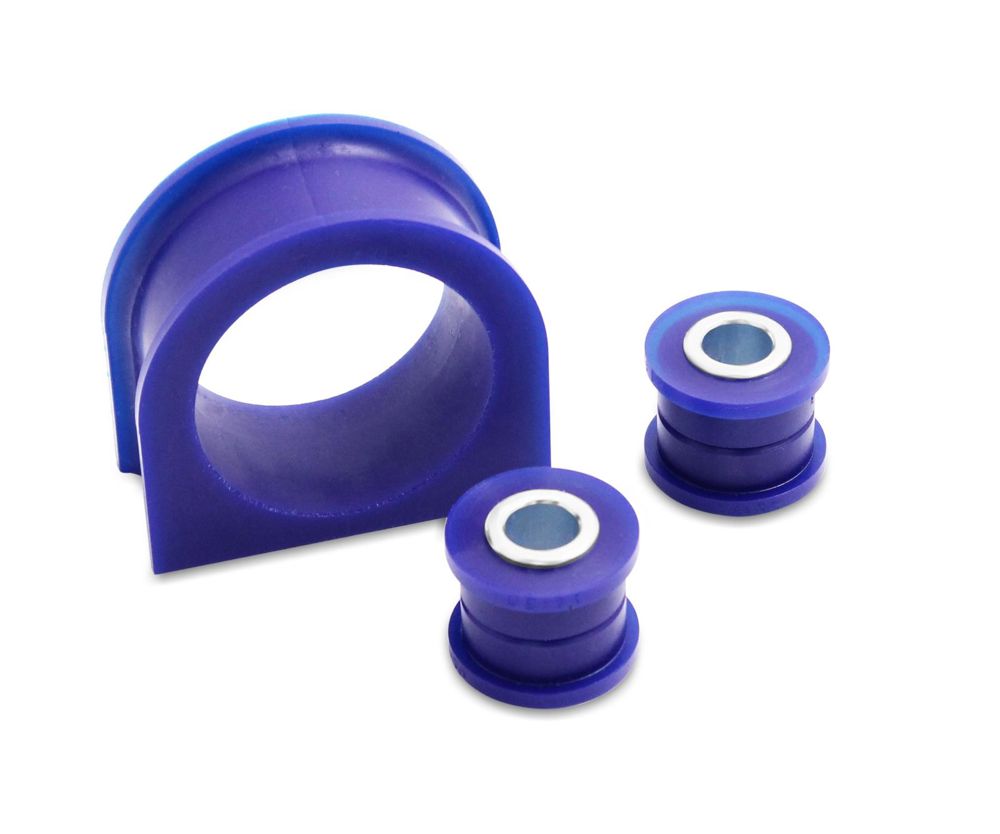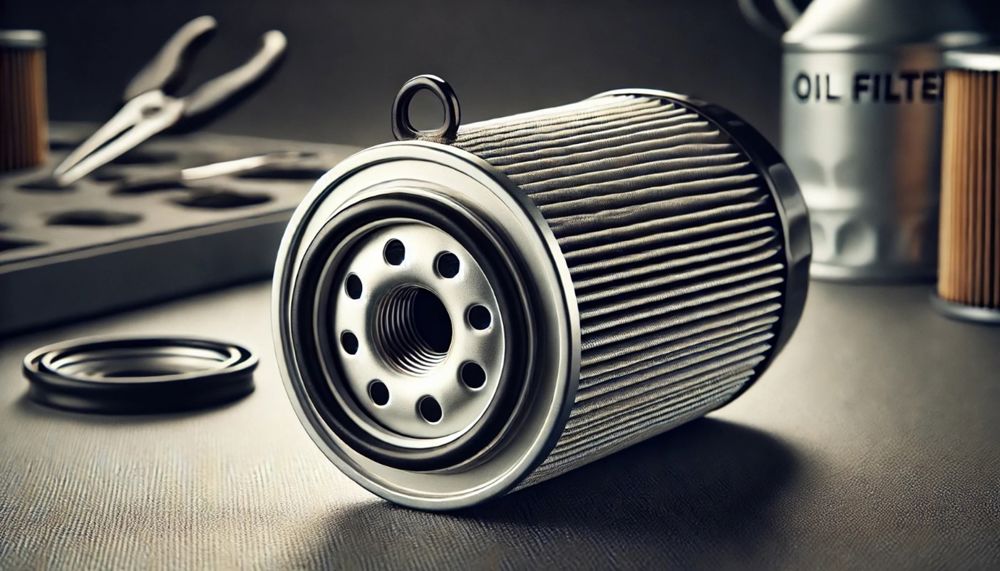Need help? Give us a call
17th Apr 2025
Windscreen Wipers: The Ultimate Guide to Choosing, Maintaining & Replacing Wiper Blades
The ultimate guide to types of wiper blades available in the UK, how to choose and maintain them, and when you should replace them for a clear, safe drive.
As car maintenance jobs go, it’s easy to take your windscreen wipers for granted. Until they get worn or damaged, of course, when we start to appreciate the crucial role they play in creating a safe driving environment.
Rain, snow, ice, road salt, Saraha-orange dust and flying debris…they all reduce visibility, which can be stressful and dangerous (remember that icy winter evening after the gritters had been out and you ran out of screenwash 40 miles before you got home?). Without a clear view of the road ahead, especially in adverse weather conditions, the risk of an accident is much higher.
Windscreen wipers aren’t without their problems: streaks, squeaks, judders and ineffective wiping are all frustrating. And with so many options available, how do you choose the right ones?
This detailed guide shows you how to choose, maintain and replace your wipers. When you’re ready, you can browse compatible wiper blades for your vehicle from our huge range.
In this article:
- The different types of windscreen wipers
- When to replace your wiper blades
- How to replace windscreen wiper blades correctly
- How to keep your wipers in top condition
- Why your wipers squeak or judder
- Are Your Wipers Road-Legal? Understanding UK MOT Rules & Regulations
Understanding different types of windscreen wipers
There are several types of wiper blades commonly available in the UK, each with different features.
- Main Wiper Blade Types:
- Standard/traditional wiper blades
- Flat wiper blades
- Silicone wiper blades
- Hybrid wiper blades
- Spoiler wiper blades

Standard / traditional wiper blades - Somewhat resembling a coat hanger in shape, these plastic or metal-framed wipers are available in different lengths ranging from 9 inches (225mm) to 28 inches (700mm). They’re usually attached to the car using a hook-shaped wiper arm fitting, offering between four and eight pressure points along their length.
Although cheaper than other types, standard wiper blades lack the more consistent contact with the windscreen than others and can also be less durable. As a result, although still widely available, they’re becoming less common on newer cars owing to the innovation of newer designs. When traditional wiper blades become unserviceable they can usually be upgraded to flat wiper blades for better performance and durability.

Flat wiper blades - These are now found on most modern cars. The more streamlined design sits lower on the windscreen and consists of a tensioned metal strip running within the rubber blade structure, plus a spoiler to hold the wiper blade against the windscreen when in use. This produces a flatter, more aerodynamic profile, more contact points for consistent contact with the windscreen, and less wind noise.
Flat wiper blades are smaller than traditional wipers, which gives drivers a larger field of vision. As they're a one-piece design it’s not possible to replace the rubber section. They can only be replaced with a similar type of wiper blade.
This 16" PIAA Silicone Tech Flat Wiper Blade fits many vehicle models, but we have many others to help you fit the right one.
Silicone wiper blades - Silicone is a much more durable material than rubber in extreme heat or cold temperatures, so you can expect silicone wiper blades to last up to twice as long before they need to be replaced. But performance, as well as longevity, makes them a very popular, albeit more expensive, choice.
When raindrops hit your windscreen they usually flatten and spread, which reduces visibility. Using silicone wiper blades for a few minutes coats your windscreen with a water-repellant hydrophobic layer. It’s this layer that keeps water droplets in a more compact, spherical bead. Not only does this improve visibility, silicone blades reduce drag, so they wipe much more smoothly, which removes annoying squeaking and juddering problems.
The images below show clearly the difference in visibility between a windscreen with and without the hydrophobic coating that silicone wiper blades provide.


Similarly, in hot weather, the leading edge of standard rubber blades can melt to the windscreen. Silicone blades have a much higher melting point, so they won’t be damaged in hotter weather and will continue to perform as they should next time it rains.

Hybrid wiper blades - A hybrid wiper blade combines the aerodynamic design of a traditional wiper with the sleek look and performance of a flat blade. It features a metal frame for strong pressure, and a plastic or rubber aerodynamic cover to improve contact with the windscreen, offering better performance in UK weather conditions like rain, snow, and wind.

Spoiler wiper blades - These are traditional-style wipers with an added built-in spoiler along the length of the blade. The spoiler uses airflow to press the blade more firmly against the windscreen at higher speeds, improving contact and wiping performance — especially useful in the windy or rainy driving conditions typical in the UK. They usually have a metal frame for durability, with rubber blades and a plastic or rubber spoiler for aerodynamic impact.
When to Replace Your Windscreen Wipers
Over time, the rubber on wiper blades naturally degrades due to exposure to sunlight, rain, frost, and everyday wear. Knowing when to replace your wipers helps ensure you’re never caught out in poor conditions.
How long do wiper blades last?
On average, wiper blades should be replaced every 6 to 12 months, but this can vary depending on how frequently you drive, where your vehicle is parked (exposure to the elements), and how often the wipers are used. If you often drive in rain, snow, or on salted roads, your wipers may wear out more quickly.
Signs you need new wipers:
Look out for these common indicators that it’s time for a replacement:
- Streaking or smearing on the windscreen: If your blades leave behind water trails or a cloudy film, the rubber may have hardened or cracked.
Squeaking or noisy operation: Excessive noise when the wipers are in use suggests the rubber is no longer gliding smoothly across the glass.
Juddering or skipping motion: If the blade hops or jerks across the windscreen, it may be warped or the rubber has lost flexibility.
Visible wear and tear: Cracks, splits, or fraying edges are clear signs that the wiper blade is past its best.
Regularly checking your wipers and replacing them when needed ensures clearer visibility, a more comfortable drive, and safer journeys—whatever the weather.
How to Replace Windscreen Wipers Correctly
Replacing your windscreen wiper blades is a simple task that most drivers can do themselves, but it’s important to get it right to ensure proper performance and avoid damaging your windscreen.
Basic Steps:
- Lift the wiper arm carefully: Gently pull the wiper arm away from the windscreen until it locks into an upright position. Be careful; these arms are spring-loaded and can snap back quickly if let go.
- Remove the old blade: The method for removal depends on your wiper's attachment type (hook, pin, or bayonet). Most require you to press a tab or slide the blade to release it from the arm.
- Attach the new blade correctly: Align the new blade with the fitting on the arm and secure it in place according to the instructions provided. You should hear or feel a click when it locks in properly.
- Test for proper function: Gently lower the wiper arm back onto the windscreen and test the blades using your washer jets to ensure smooth, quiet operation with no streaking or juddering.
Common Mistakes to Avoid:
- Choosing the wrong size wiper: Always check your vehicle’s handbook or an online wiper size guide to ensure you purchase the correct length for each side.
- Forgetting to remove the protective cover: Many new wiper blades come with a thin plastic cover on the rubber edge. Leaving this on will prevent proper contact with the glass and result in poor performance.
- Not securing the blade properly: If the blade isn’t firmly attached, it can come loose during use, potentially scratching the windscreen or detaching completely while driving.
Troubleshooting Tips:
- If your new wipers are still streaking or noisy, double-check that the blades are correctly seated and the rubber is clean.
- Make sure the wiper arms haven’t been bent or misaligned—this can prevent even contact with the windscreen.
- If problems persist, it may be time to replace the wiper arms themselves or inspect the windscreen for wax, residue, or damage.

How to Keep Your Wipers in Top Condition
Keeping your windscreen wipers in good working order doesn’t take much effort, but a little regular maintenance can extend their lifespan and ensure they perform reliably when you need them most — especially during the UK's frequent rain and frosty mornings.
Routine Maintenance Tips:
A few simple steps helps to keep your wipers in good condition all year, whatever the British weather throws your way!
- Clean wiper blades regularly: Dirt, grit, and debris can build up on the rubber, causing streaks and reducing wiping performance. Wipe the blades gently with a damp cloth or paper towel and a bit of screen-wash or mild soap and water.
- Avoid running wipers on a dry screen: This can cause friction, wearing out the rubber more quickly and potentially scratching the glass.
- Use proper screen-wash fluid: In colder months especially, make sure you’re using a quality screen-wash that’s rated for low temperatures. It not only helps clean the glass more effectively but also prevents freezing in the washer system.
- Lift wipers in icy conditions: During frosty weather, lift the wiper arms away from the windscreen when your car is parked to prevent the blades from freezing to the glass.
Why Are My Wipers Squeaking or Juddering?
If your windscreen wipers are making a squeaking noise or juddering across the glass, it's not just annoying — it could also be a sign that something’s not quite right.
Common causes and solutions:
Dirty blades: Dirt, grime, or even a light film of road salt can build up on the wiper blades or windscreen. Clean the blades and windscreen using a clean cloth and a bit of screen-wash or warm soapy water to wipe down both the rubber blades and the windscreen surface.
Worn rubber: Over time, the rubber edge of the blade can harden, crack, or split, leading to poor contact with the glass and erratic motion. If the rubber is visibly worn, cracked, or still making noise after cleaning, it’s time to fit a new set of blades.
Incorrect installation: If the wipers haven’t been fitted properly, or if the arms are bent or misaligned, the blades may not sit flush against the windscreen, resulting in squeaking or skipping. Make sure the wiper blades are properly secured to the arm and positioned correctly. If they seem loose or uneven, try removing and refitting them according to the manufacturer’s instructions.
Are Your Wipers Road-Legal? Understanding UK MOT Rules & Regulations

Can your car fail an MOT because of wipers?
Yes. During an MOT, the tester will inspect your windscreen wipers to ensure they are in good working condition. If the wipers are damaged, worn out, or fail to clear the windscreen effectively, your vehicle can receive a fail or advisory note. Even something as simple as a torn rubber edge or streaky wiping can be enough to cause issues.
Legal requirements for windscreen wipers in the UK:
UK law requires that all vehicles are fitted with windscreen wipers and washers capable of cleaning the windscreen effectively while driving. Specifically:
- The wipers must clear enough of the windscreen to provide a full view of the road ahead.
- The washers must dispense fluid when activated.
- Both systems must work correctly and be in good condition.
How to check your wipers before your MOT:
Before your MOT test, take a few minutes to inspect and test your wiper system.
- Look for visible damage: cracks, splits, or fraying on the rubber blades are signs they need replacing.
- Run your wipers and washers to check for streaking, juddering, or missed spots.
- Ensure washer jets work and that the washer system sprays fluid evenly across the windscreen. If not, check for blockages or low screen-wash levels.
Key takeaways
Replace your windscreen wipers every 6–12 months or as soon as signs of wear appear. Always choose the correct type and size for your vehicle, and carry out simple maintenance like cleaning to keep them performing at their best. Don’t ignore issues like squeaking or streaking—sorting them early helps ensure clear visibility and keeps you safe on the road.
Ready to upgrade your wipers? At TDC Automotive, we stock a wide range of high-performance PIAA wiper blades and refills, designed for durability, quiet operation, and excellent visibility in all weather conditions. Whether you need standard replacements, hybrid blades, or silicone refills, you'll find quality options to suit your vehicle.




